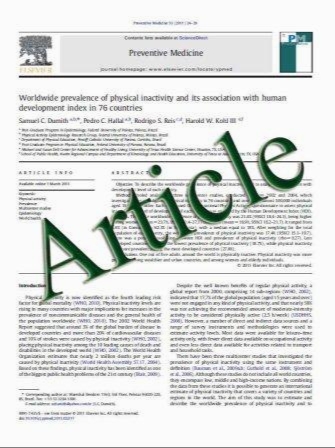Dietary patterns of antioxidant vitamin and carotenoid intake associated with bone mineral density: findings from post-menopausal Japanese female subjects
- نوع فایل : کتاب
- زبان : انگلیسی
- مؤلف : M. Sugiura & M. Nakamura & K. Ogawa & Y. Ikoma & F. Ando & H. Shimokata & M. Yano
- چاپ و سال / کشور: 2010
Description
Summary Recent studies show that antioxidants may reduce the risk of osteoporosis. This study showed the associations of bone mineral density with dietary patterns of antioxidant vitamins and carotenoids. The findings suggest the combination of vitamin C and â-cryptoxanthin intakesmight provide benefit to bone health in post-menopausal Japanese female subjects. Introduction Recent epidemiological studies show antioxidants may reduce the risk of osteoporosis, but little is known about the dietary patterns of antioxidant vitamin and carotenoid intakes and their relation with bone mineral density (BMD). Methods A total of 293 post-menopausal female subjects who had received health examinations in the town of Mikkabi, Shizuoka Prefecture, Japan, participated in the study. Radial BMD was measured using dual-energy X-ray absorptiometry. Dietary intakes of antioxidant vitamins and carotenoids were assessed by using a validated food-frequency questionnaire. Dietary patterns were identified on a selected set of antioxidants through principal component factor analysis. Results Three dietary patterns were identified. The “retinol” pattern, characterized by notably high intakes of preformed retinol, zeaxanthin, and vitamin E, was positively associated with the risk for low BMD. In contrast, the “â-cryptoxanthin” pattern, characterized by notably high intakes of â-cryptoxanthin and vitamin C, was negatively associated with low BMD. The odds ratios for low BMD in the highest tertiles of dietary intakes of preformed retinol, vitamin C, and â-cryptoxanthin against the lowest tertiles were 3.22 [95% confidence interval (CI), 1.38–7.51], 0.25 (CI, 0.10–0.66), and 0.40 (CI, 0.17–0.92), respectively, after adjustments for confounders. However, negative associations of vitamin C and â-cryptoxanthin with low BMD were not significant after further adjustment for intake of â-cryptoxanthin or vitamin C, respectively. Higher intakes of both vitamin C and â-cryptoxanthin were significantly associated with low BMD (P<0.05). Conclusions The combination of vitamin C and â- cryptoxanthin may be associated with radial BMD in post-menopausal Japanese female subjects.
Osteoporos Int (2011) 22:143–152 DOI 10.1007/s00198-010-1239-9 Received: 8 December 2009 / Accepted: 1 March 2010 / Published online: 18 May 2010


